It’s a great time to be a marketer in the eCommerce industry. You don’t have to take our word for it, though. We’ll let the numbers talk.
The eCommerce industry has already doubled in sales volume since the pandemic in 2020. That’s just 2 years!
And, according to Nasdaq, 95% of all retail purchases will be through eCommerce stores by the year 2040!

So, this is when eCommerce marketers can fully leverage their creativity to capture their share of the rapidly growing eCommerce industry.
That’s why we’ve created an easy, 15-Step plan for creating your own, personalized eCommerce marketing strategy to suit the unique needs of your eCommerce store.
By the end of this article, you will be able to:
- Create your own personalized eCommerce marketing plan
- Target the right customer at the right time with the right strategy
- Improve overall customer experience with the right marketing tactic for each stage of the sales funnel
Let’s get right to it!
Table of Contents
1. Attract Organic Traffic With a Great Website
This is a no-brainer. A beautiful, easy-to-navigate, and well-crafted website is non-negotiable if you want to be successful, thus, you can always take leverage from free AI website builders in the market to help you reaching this goal.
In the good ol’ days, window displays could attract prospects passing by your store. But, when you don’t have a physical storefront, your website becomes the prospects’ main point of contact.
This is also a great way to drive more organic traffic. According to market research, 43% of the total eCommerce traffic comes from organic traffic through Google. And, this does not include other popular search engines like Bing or DuckDuckGo.
But, there are many different aspects to consider while building your eCommerce website. Let’s break them down.
Do the SEO for your product page copies as well

Your product page is your chance to create the right first impression in the minds of your prospects. This is your shot at convincing the customer that your product is worth it, building trust in your brand, and driving sales. Your product page should be both simple and user-friendly. Here are some expert tips to optimize your product page copies:
- SEO keyword optimization: Conduct thorough product page keyword research using a good SEO monitoring tool. You can also analyze your biggest competitors’ organic and paid traffic keywords. This will help you rank higher in the SERPs in the long run.
- Find the right meta descriptions and titles: We’re not saying keyword stuffing is an effective strategy. Don’t do that. But, optimize all your titles, product page URLs, and meta descriptions to ensure that you provide useful info to prospects. Try to highlight your product’s USPs in the meta descriptions.
- Provide clear product information: This is the most important part of your product page copy. The info should be clear, relevant, and compelling. Include the shipping prices and other charges that may apply as well. Outline your returns policy too. And, upload only high-resolution, clear pictures of the product. You’ll need to include a clear call to action (CTA) button as well.
Read also: eCommerce Metrics Made Easy: How to Measure Success and Drive Growth
Check for how responsive your website is
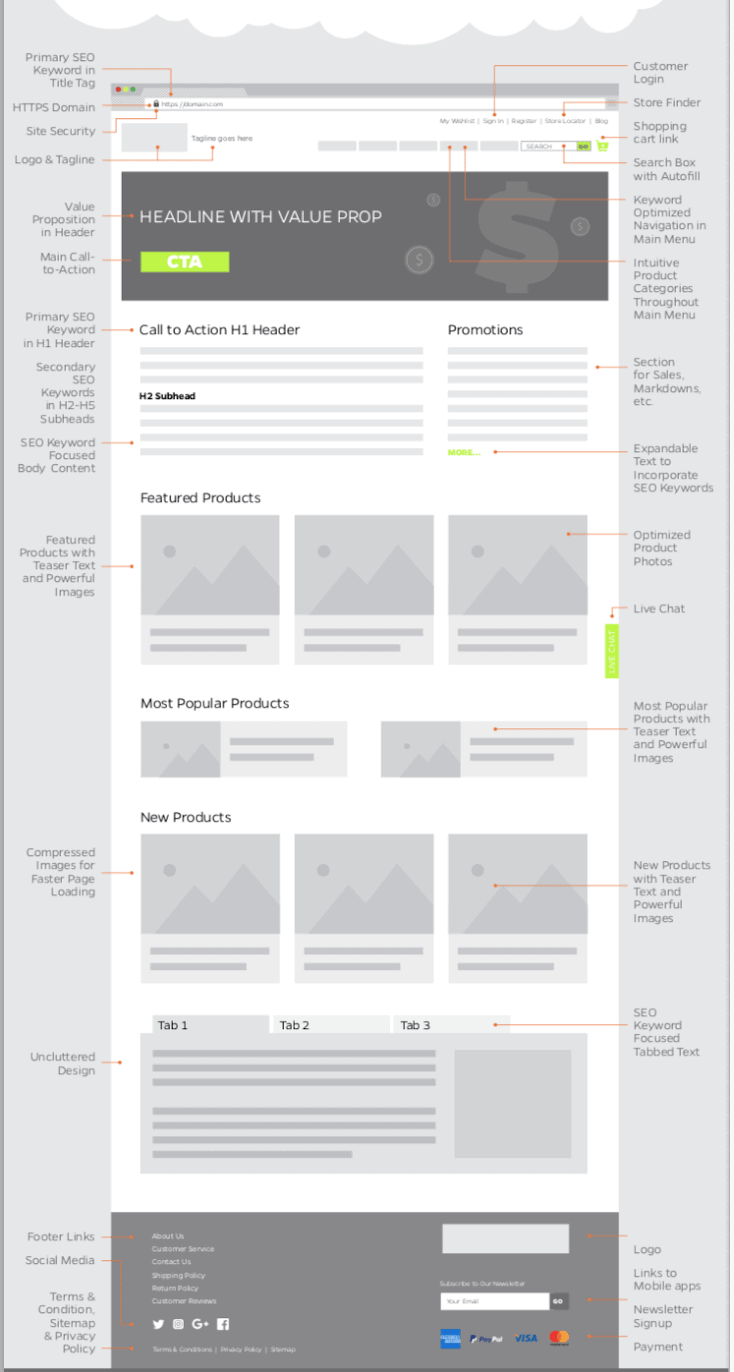
The next step is to improve your website design. As a rule of thumb, every webpage should tie in with your brand and be relatively easy to navigate. Keep your customer at the forefront while designing your website. Here are some tips to keep in mind:
- Page navigation menu/options: The navigation menu usually appears at the top or on the left side of a webpage. Here, you can categorize your products and organize them. Ideally, this process should be clear and simple for your customers.
- Responsive website design: A responsive website design is optimized for viewing on all devices. Creating a responsive web page includes aspects like using a fluid grid for scaling a website to any size, calibrating the website for touchscreens, defining responsive font sizes, and defining responsive breakpoints (aka CSS breakpoints) to automatically adjust the website to the device resolution.
- Use interesting content blocks: All web pages are built out of content blocks. These are just different parts of your webpage, like the heading banner, image sliders, text boxes for content, and product sets (like best sellers, premium products, etc.) You’ll have to mix up the content blocks to create contrasts as the customer navigates through the pages. You can also create dynamic landing pages, which will display different texts or info based on customer variables like location, gender, etc.
- Create a clear conversion path: Use highlighted call-to-action buttons (CTA) to create a clear path to drive maximum purchases. At no point should the prospect doubt where to click next to complete their purchase. Try to keep the checkout steps to a minimum.
- Enable multiple filter options for products: Make it easy for prospects to search and filter out products based on their preferences.
Read more: 14 Stunning eCommerce Landing Page Examples (With Expert Tips)
Publish useful content as blog posts
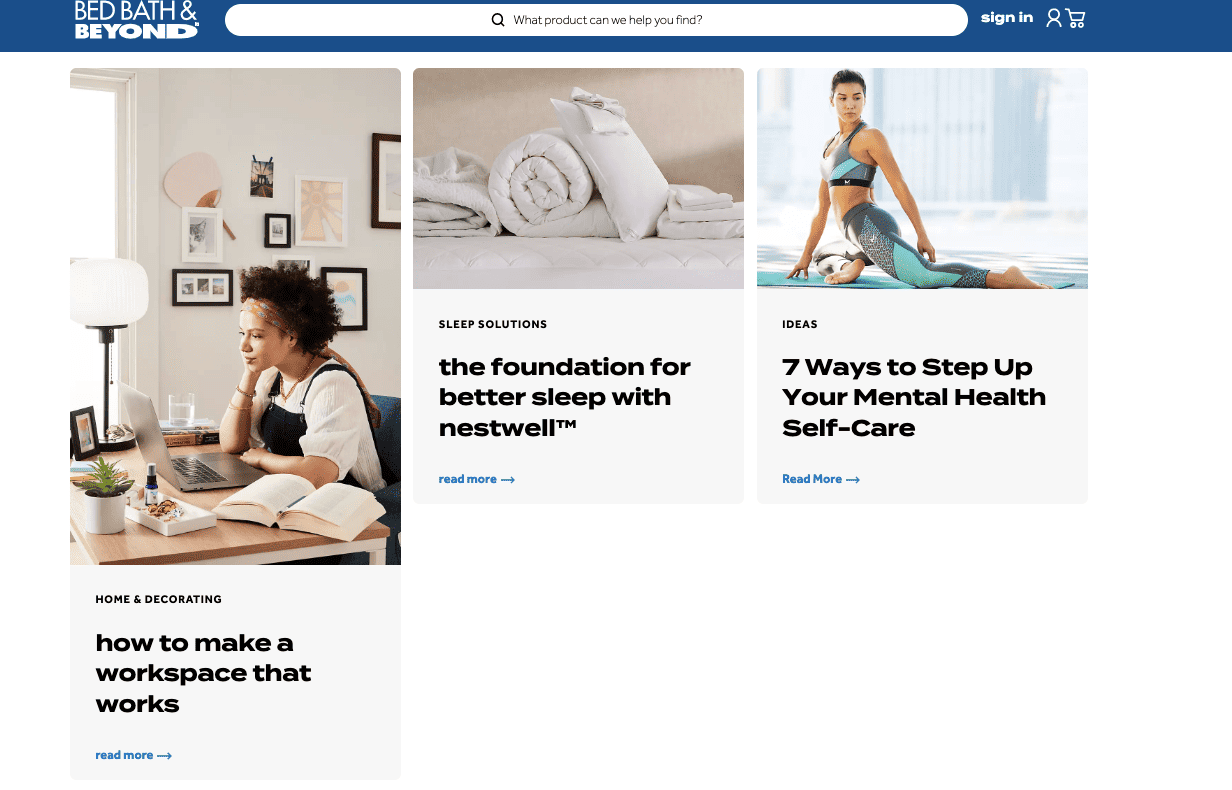
Creating a blog with useful, engaging content is fast becoming a necessity for eCommerce stores. With blogs, you don’t have to invest a lot of money to get the ball rolling. And, it’s a great way to boost customer engagement, establish yourself as an expert, and generate new leads.
You also have the option of linking your blogs with your email marketing campaign for the best results. You can send curated blog posts to prospects every month too.
However, there’s one big mistake that eCommerce companies should avoid when it comes to their blog. This mistake is — letting your blog pages outrank your product pages.
At times, Google may end up ranking your blogs higher than your product pages. If this is happening to you, then first take a look at your internal linking and the quality of the content. Sometimes, Google picks up on the keywords from your blogs and ranks them higher in the SERPs.
You can also fix this by getting a separate sub-domain for your blogs. This is already practiced by many eCommerce giants. This way, you have two chances to rank higher on the SERPs.
Read also: Find the Perfect B2B Ecommerce Platform for Your Needs
Don’t give up on guest posting
Guest blogging for eCommerce means that you invite experienced writers from outside your company to write engaging posts on your eCommerce blog.
It could also mean that you write blogs for other eCommerce websites. Either way, it’s something you have to do if you’re not already doing it.
This helps you create more engaging and helpful blog posts, especially if you can find writers who are experts in your niche. Here are some ways guest posts help eCommerce companies:
- Generate more leads for your eCommerce store.
- Create quality backlinks for your niche
- It’s a win-win that helps you build better relationships with industry bloggers.
- Build better domain authority over time.
Read also: The Beginner’s Guide to Writing eCommerce Business Plan
Help your website visitors with FAQs

Many eCommerce companies make the mistake of not having a Frequently Asked Questions (FAQ) page. Remember, if a user doesn’t find helpful content within a short time, they are likely to leave your site.
Rather than leaving the burden of communication on the customer, an FAQ page can help you sell more products. Use a keyword-driven FAQ to clearly and briefly answer common questions customers would have.
This way, the prospect doesn’t have to contact customer care or the chatbot. It saves them time and energy, leading to more sales for you in the long run.
Read also: 5 eCommerce Email Personalization Strategies [+ Examples]
Get the juice out of customer reviews

Without displaying and managing customer reviews on your eCommerce website, you’re going to lose out on business.
According to Bazaarvoice, the chances of converting a prospect go up by 82% when there are good reviews. Everyone wants to buy the best product in the category from a trusted source. And, user reviews are just the path to establishing credibility.
There are several eCommerce review apps available to make it easier for you to manage, moderate, and publish these reviews on your website.
These include Trustpilot, and Bazaarvoice, among many others.
Read also: Find the Perfect B2B Ecommerce Platform for Your Needs
2. Let Software Do What Software Can
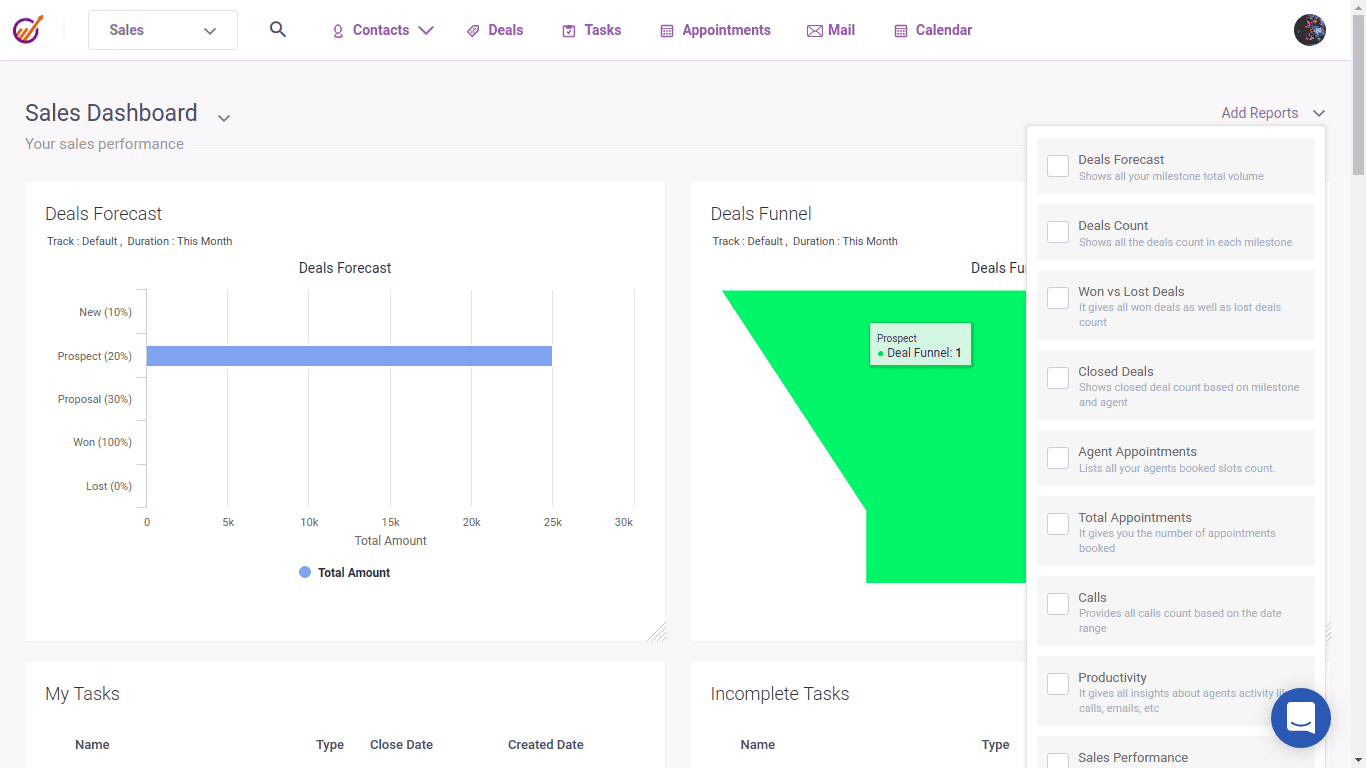
Whether it’s email marketing or social media marketing, there’s a suitable marketing tool out there to meet your needs. It’s pretty much impossible to scale up an eCommerce store without investing in good marketing tools and reporting software.
These are some of the factors to consider while investing in marketing and reporting tools:
- Budget and number of contacts: First, you need to identify the appropriate budget based on the number of contacts you have in your list. Most SaaS eCommerce marketing solutions charge a monthly fee based on the number of contacts in your list.
- Marketing automation features: Get clear on the kind of features that are non-negotiable for your eCommerce store. For instance, what are the workflows you are looking to automate? Do you require a sturdy website builder to re-invent your website quickly? What kind of lead segmentation are you planning? After this list of essential features, make another list of features that would be a great bonus if it were there.
- Ease of learning the tool: This is often an underestimated factor. If your team is having trouble using the software, there’s no point investing thousands of dollars! Ask your provider about their onboarding and training features.
- Scalability: If you’re expecting to see rapid growth over the coming years, then scalability is absolutely important for you. As you grow, your marketing tools and CRM should grow with you.
- Customer support: Finally, make sure you know how you can get in touch with your software provider in case you face issues. Quick resolution and troubleshooting are super important to keep you functioning smoothly.
Read more: Best Free CRM Apps, By Category (with User Reviews)
3. Build Funnels for Different Buyer Personas
Here is a typical example of a simple sales funnel. Each customer goes through each stage of the sales funnel as they make a purchase. Although, the order may not be linear for each customer. That’s completely normal.
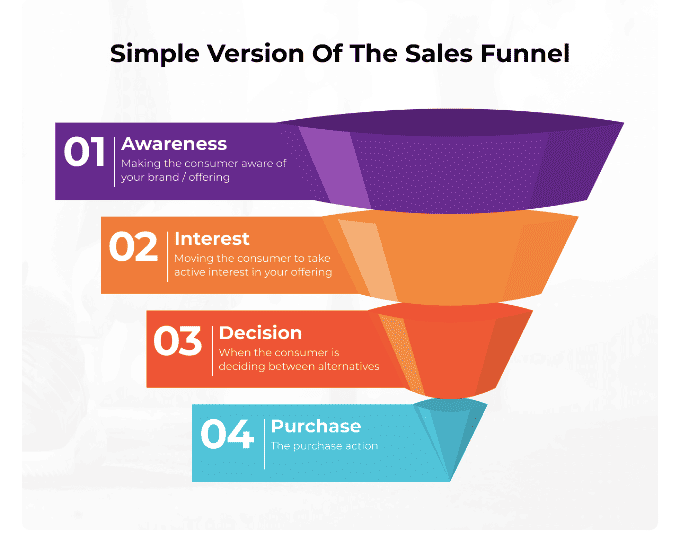
So, rather than having vague attempts at segmenting your prospects and leads, you can segment them by SKU and create buyer personas for each SKU.
SKU is an acronym for Stock Keeping Unit. Typically, this is a code of eight alphanumeric characters that are assigned to each product to keep track of stock levels. Unlike the UPC (Universal Product Code), SKUs are generally used internally within the company.
You can also create buyer personas to segment your contacts. A buyer persona is a semi-fictional abstraction of the traits and behaviors of your ideal customer. Each persona is created based on factors like demographic data, and their interaction with your website.
Remember, the key goal of a buyer persona is to easily identify their pain points, their motivations, and predict their future buying behavior.
As a rule of thumb, small to mid-size eCommerce firms can begin with just 5-7 buyer personas for different SKUs. And, as the company grows you can scale up around 12-15 buyer personas.
Read also: 6 High-Impact eCommerce Marketing Strategies to Try Now
4. Try To Balance The Paid and Organic Traffic

The bottom line for eCommerce companies is that you need both paid and organic traffic regularly to your site. A good marketing strategy for eCommerce will aim to get a healthy mix of both.
To put it very simply, organic traffic is what holds endearing value. When your website and blogs rank in one of the top two SERPs, you’re guaranteed new leads whenever someone searches for your product-related keywords on search engines.
On the other hand, paid traffic coming through pay-per-click (PPC) ads or social media ads can help you boost lead generation in the short term. However, you can’t rely on just paid traffic if you’re looking to establish yourself in your niche.
Here are some situations where paid ads will work well for you:
- When you want to increase brand awareness in a short amount of time.
- Where you need to target a niche segment of prospects.
- To promote limited-time offers or discounts.
You can boost organic traffic in the following situations:
- To create credibility and trust over time.
- Establish good website authority.
- Boost the value of your website over time by providing helpful content.
Read also: The Beginner’s Guide to eCommerce Marketing Automation
5. Develop and Refine Your Lead Generation Strategy
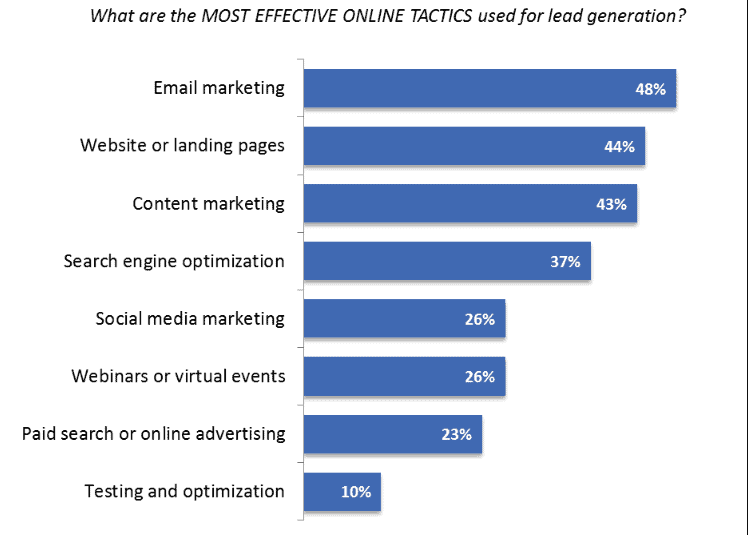
The good news is that the eCommerce industry has a shorter period for conversions. Let me explain.
Let’s say a customer finds your online tote bag store for the first time through a paid ad. If they like your product, they can decide to buy it immediately.
But, if a customer is looking to buy a laptop, they’re more likely to take their time to compare different laptops before buying.
So, based on your unique needs, you’ll need a solid sales and lead generation strategy in place. This strategy should tie in different channels of marketing like emails, social media, etc.
A winning sales and lead generation strategy for eCommerce will try to improve on all these aspects:
- SEO Optimization for websites and blogs
- Optimizing Conversion Rates (CRO)
- Customer segmentation
- Pay-per-click (PPC) advertising
- Cross-selling and up-selling products
- Integrate all channels like email, social media, SMS, push notifications, etc.
Read more: CRM in eCommerce — The Perfect Partners for Personalization
6. Give Your Best to Email Marketing
Email marketing has some of the least investment costs. And, it has some of the highest returns on investment! So, email marketing will be well worth the time you invest in it. It’s a great way to establish your expertise and keep your prospects engaged in the long run.
For best results, you will need to automate your emails at key touchpoints at each stage of the sales funnel. Here are just two major automated email campaigns you can run.
Post-purchase follow up

No matter what you sell on your eCommerce storefront, you’ll need to send post-purchase follow-up emails. And, this is a chance to get creative, as these emails have a higher open rate than promotional emails.
In the example above, the engaging email copy is followed with a referral coupon. This is a great strategy to gain new leads. Generally, eCommerce marketers send automated emails for these post-purchase situations:
- Thank you or Order Confirmation email
- Shipping confirmation email
- Order delivered email
- Cross-sell or upsell emails
- Review/Rating/Survey emails after purchase
- Referral email after purchase
👉Supercharge your ecommerce business with marketing automation – explore our comprehensive guide now! 🌟
2. Abandoned shopping cart
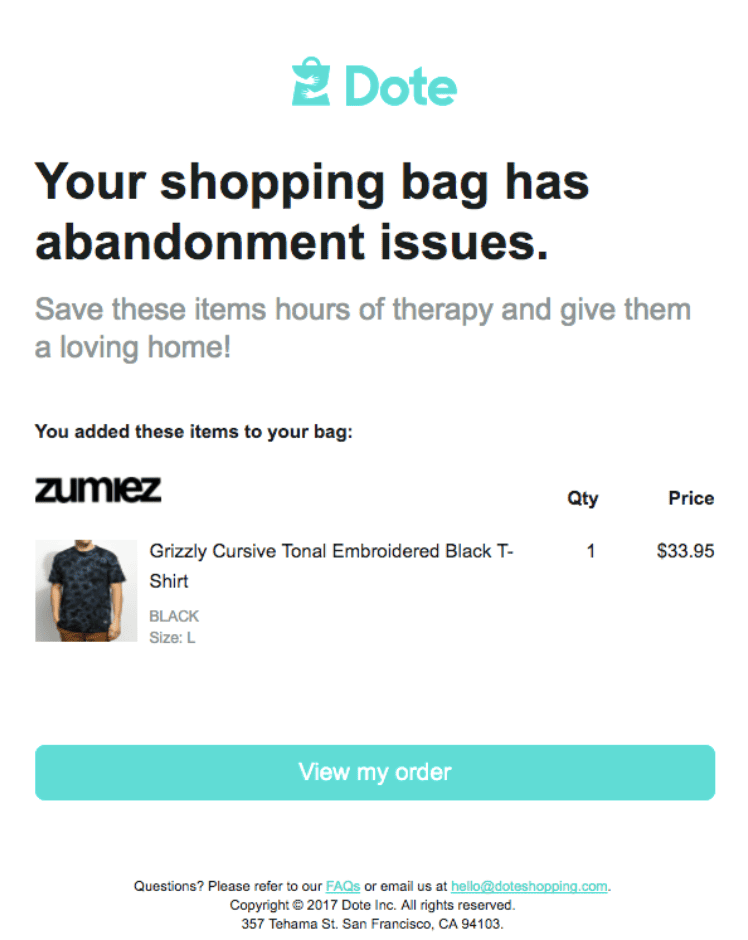
The goal of these automated emails is to get the customer to come back and make the purchase.
According to a survey by CSA, 86% of shoppers said that they had abandoned items in the cart. But, 31% of shoppers also planned to buy the products at a later date.
So, your job is to remind these customers to come back to their purchase. You can set up a campaign of three or more cart abandonment emails. Always remember to include a snappy subject line and a clear call to action (CTA) button at the end of the email. The example above is great in terms of both design and content.
Read more: 8 Best Email Marketing Software for eCommerce in 2023
7. Make the Checkout Process Delightful
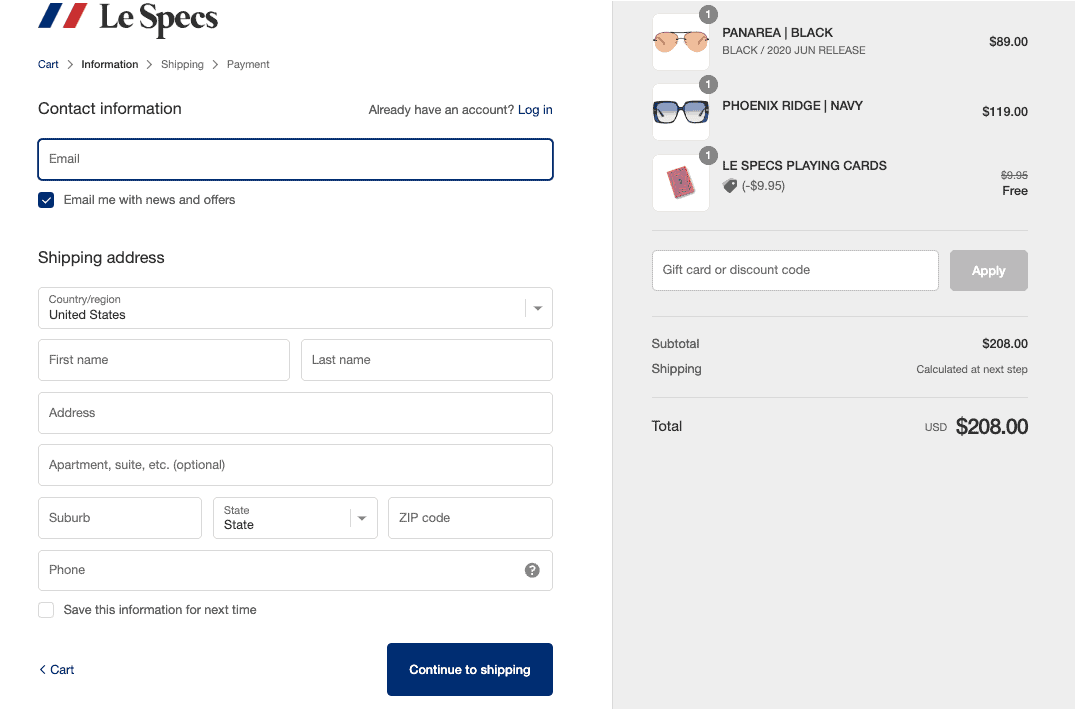
The checkout process is like the final boss battle in video games 😆
If you clear this hurdle, you have successfully made a sale.
Here are some top tips for optimizing your checkout process:
- Have minimal steps in the process and include the option of guest checkout.
- Don’t collect too much data. Stick to the most crucial data form fields.
- Don’t surprise them with hidden charges and shipping charges. Be clear and upfront.
- Enable smart form filling to make it quicker.
- Ensure payment security.
👉Discover the most innovative ecommerce marketing ideas that will transform your campaigns in our detailed article! 📈
8. Let the Shopping Cart Save You

The next step is to optimize your cart on your eCommerce website. Here are some important factors to help streamline your shopping cart.
- Offer a variety of payment options. The more, the better.
- Display security badges for your payment gateways.
- Add a ‘mini cart’ feature where customers can see the cart while browsing if they wish.
- Use an auto-save feature for all carts to allow shoppers to come back later.
- Use the view cart page to up-sell and cross-sell related products.
- Make navigation easy and quick between the cart and product pages.
Read also: 17 Fab Ideas for eCommerce Business in 2023
9. Try a Few SMS Campaigns
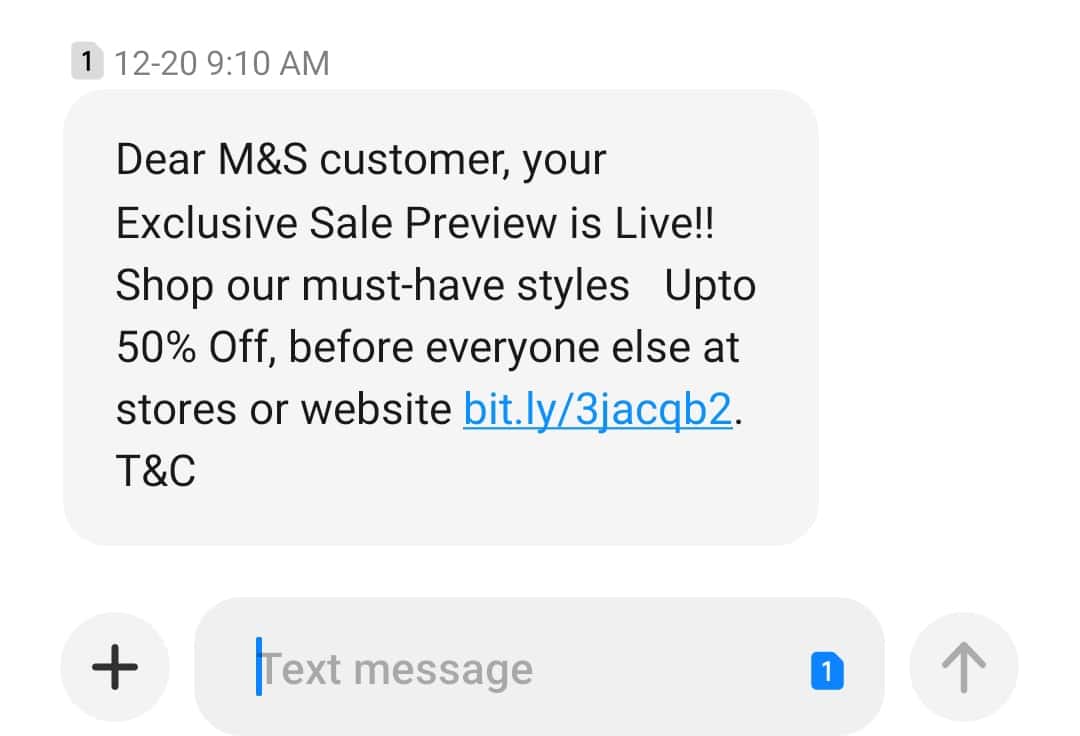
A recent survey found that a whopping 85% of consumers would check a text message within five minutes of receiving it!
So, it’s painfully obvious that SMS marketing is a part of your overall eCommerce marketing strategy. First, partner with the right SMS provider to start your SMS campaigns. You can use SMS to shoot quick updates for shipping and delivery tracking. But, there’s a lot more you can do with SMS campaigns.
Here are some tips for sending out high-converting SMS campaigns:
- Keep it short, crisp, yet punchy. Ideally, each SMS should contain only 160 characters or less.
- Include a clear call to action.
- Don’t send too many texts in a week.
- Take permission from the prospect before sending any SMS. Also, give them the choice of opting out.
Read also: eCommerce Email Marketing Simplified: 15 Examples + Tips
10. Publish Product-Related Videos on YouTube
YouTube isn’t just a site where you can watch funny dog videos! It’s a great channel for eCommerce marketing when used right.
After all, it’s the second-most visited site after Google.
So, here’s what you can do to leverage YouTube for driving your eCommerce sales:
- Update your YouTube profile. Add your eCommerce store and social media links in your YouTube description.
- Optimize your YouTube videos for search engines. This includes doing some keyword research and competitor analysis.
- Create engaging, helpful content that adds value to your customers.
- Decide on the kinds of videos you’ll make. Some great options are product explainer videos, customer testimonials, or a behind-the-scenes video for your eCommerce store.
- Create chapters and custom thumbnails for each video. You can even create playlists to engage audiences for longer.
- Consider paying for YouTube ads, especially if you need an immediate boost in visibility. However, only quality content can keep your audience coming back for more.

11. Go To TikTok For Marketing

Whether you love or hate this quirky yet entertaining app, TikTok is here to stay. If one of your marketing goals is to target young adult consumers (between the ages of 18-24), then TikTok is a must.
In 2021, 47% of TikTok users said they purchased a product based on a TikTok video. This is no small number!
Here are some handy strategies for your TikTok marketing campaigns:
- Get clear on your ideal TikTok follower persona. And, set achievable goals for your TikTok marketing strategy.
- Regularly feature happy customers as micro-influencers.
- Create authentic content that takes advantage of the latest trending songs and filters.
- Use the right hashtags for all your videos and include links for prospects to follow.
- Use TikTok eCommerce shopping features to upload your product catalog. Once you have 1000 followers or more, you can even set up TikTok lives.
- Host TikTok challenges, giveaways, and contests.
Read also: The Beginner’s Guide To ECommerce Support Outsourcing
12. Improve Your Live Chat
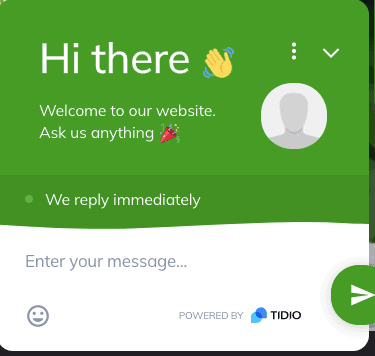
Live chat is a great add-on feature for your eCommerce website if you want to quickly resolve customer issues or queries.
According to surveys, 92% of customers say they feel satisfied after using a live chat. So, talk to your customers whenever they need you. It’s a winning strategy. Here are some tips for maximum conversions using a live chat feature:
- The chat widget should ideally be visible as prospects navigate through web pages.
- Ensure minimal response time for the chat. And, give them an estimated response time.
- Keep transcripts of each chat history to ensure resolution in the quickest time.
- Train your customer support team well.
👉Are you trying to find ways to prevent overstocking? Our guide here provides effective strategies to manage your inventory.
13. Optimize Everything With A/B Tests
A/B Testing simply means comparing different variations of the same element in a web page or email to find the optimal variation. This ensures that you maximize conversions and eliminate guesswork about customer preferences.
You can A/B test the following variables:
- Homepage and landing page layouts, content blocks, etc.
- Product pages and product descriptions.
- Email campaigns.
- CTA buttons on emails and landing pages.
- Meta descriptions for your web pages.
Of course, this is not a definitive list. Choose the variable for which you need the most data, and go from there.
Read more: 11 Tested Tips to Improve Open Rates through Email A/B Testing
14. Run a Loyalty Program
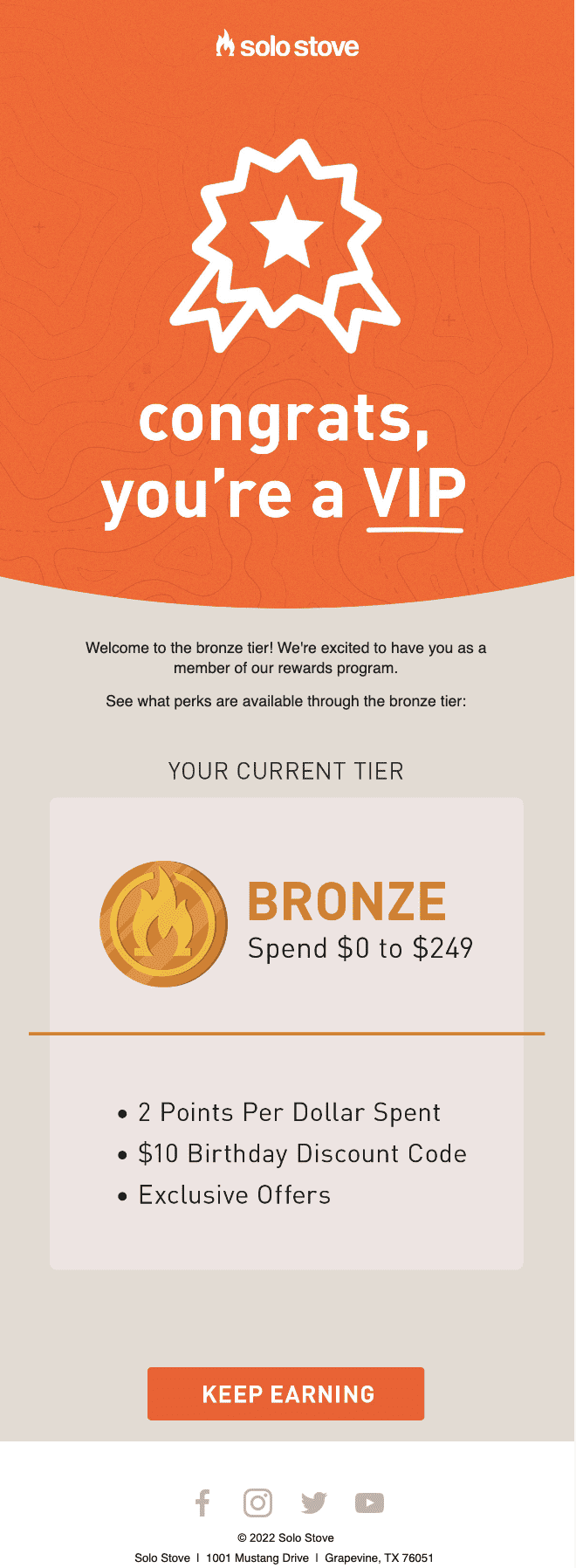
Sure, lead generation is important. But, what about your loyal customers who have already spent money on your site?
One successful customer-retention strategy is the use of loyalty programs or rewards programs. With this, you’re giving customers a strong incentive to keep coming back and buying more products.
Over time, your customers end up forming emotional bonds with your products or brand. This is great news if you want to increase the customer’s lifetime value. Only a fool would miss out on the opportunity to gather more customer data while making them feel appreciated!
15. Go Viral With User Generated Content (UGC)

“When you say it, it’s marketing; when your customers say it, it’s social proof”
~ Andy Crestodina
And, we couldn’t have put it better. User-generated content is a surefire way to build credibility and relatability. Your home page can feature a few selected user testimonials.
But, it’s on social media channels that your UGC shines, so ensure an omnichannel approach to UGC. There are several UGC management platforms that you can consider using to build your own UGC campaign.
Read more: eCommerce Marketing — 8 Fantastic Strategies For Success
Wrap Up
Creating an eCommerce marketing strategy from scratch can be quite overwhelming and challenging at first.
Breaking it down into manageable chunks and working through each marketing channel one by one is the best way to leverage the maximum sales.
Remember, that marketing isn’t all about getting your brand out to the world, it’s all about creating that delight factor with your offering, and getting that lead through the door.
Did we miss out on any steps? Tell us your thoughts below.

